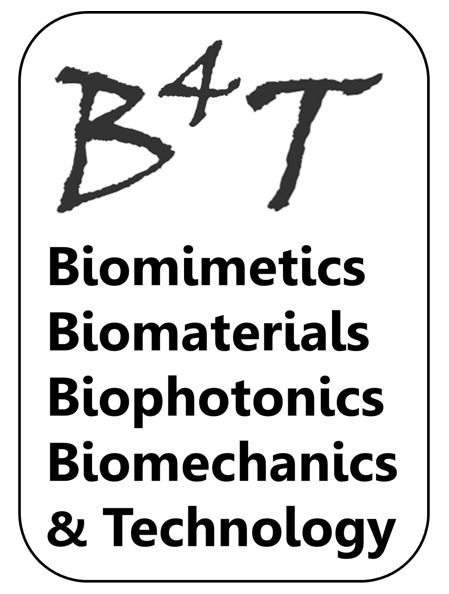B4T SOPs
Standard Operating Procedure for Management of Hazardous Materials
UW SOD Biomimetics • Biomaterials • Biophotonics • Biomechanics & Technology Lab – Room B-162
Quick Links:
Flammable Materials |
Methyl Methacrylate |
Fine Particles |
Cleaning & Disinfectants |
Organic Acids |
Inorganic Acids
Flammable Materials (Updated: Aug 2025)
Hazardous Material: Flammable Materials
Products Used
- Methyl Methacrylate Monomers
- Orange Solvent
- B400 & 401 Adhesives
- True-Stain Acrylics
- Plug-it Solvent, Plug-it Accelerator
- Detachol Adhesive Removers
- Dri-Purge Aerosol
- S2260 & 1205 Prime Coats
- Ethyl Alcohol, Acetone, Xylenes, Toluene, Trichloroethylene, Isopropanol, Wax Remover
Description
These products are used to fabricate resin-based dental appliances, as adhesives, and for cleaning purposes.
Physical Hazards
DANGER: Extremely flammable liquids. Flash point below 100°F; combustible liquids between 100°F–200°F.
Health Effects
- Vapors can travel and ignite, causing explosions.
- High exposure affects CNS: dizziness, sedation, coma, death.
- Harmful by inhalation and skin contact.
PPE
Wear splash goggles, chemical-resistant gloves, and a lab coat. Required for spill cleanup >1L.
Work Practices
- Dispense <1 oz in a well-ventilated area.
- Larger quantities: use fume hood in D1.
- Eliminate all ignition sources.
Storage
- Less than 10 gallons: storage outside flammable cabinet allowed.
- More than 10 gallons: use approved flammable liquid storage cabinet.
Spill & Accident Procedures
| Incident | Action |
|---|---|
| Skin/Eye Contact | Wash with soap and water; flush eyes for 15 minutes; seek medical evaluation. |
| Fire | Remove ignition sources; extinguish only if safe and trained. |
| Spill | Absorb with pads or sand; wear PPE; avoid inhalation; spill kits in D3, D065, B307, B229. |
Waste Disposal
Place in container labeled “Hazardous Waste” (D352). Submit Chemical Collection Request to EH&S.
Methyl Methacrylate (Updated: Aug 2025)
Hazardous Material: Methyl Methacrylate
Products Used
Examples: Temp Bridge Resin, Ortho Resin, Duralay, Lucitone 199, Triad VLC bonding agents, GC Pattern Resin, Perm Reline & Repair.
Description
Used in fabricating dentures, trays, occlusal guards, resin patterns, orthodontic appliances.
Physical Hazards
- Highly flammable monomer. Vapors may flash back to ignition source.
- Heat induces polymerization with energy release.
Health Effects
- Inhalation: CNS depression, dizziness, sedation, death in high exposure.
- Skin contact: irritation and defatting effect.
PPE & Work Practices
Wear goggles, gown, gloves. Dispense small amounts in ventilated area; large amounts in fume hood.
Storage
Follow same flammable material rules: approved cabinet for >10 gallons.
Spill Response
- Neutralize spill with absorbent pads or sand.
- Avoid vapors; PPE required.
- Kits in D3, D065, B307, B229, D-451A.
Waste Disposal
Label container as hazardous and contact EH&S.
Fine Particle Materials (Updated: Aug 2025)
Hazardous Material: Fine Particle Materials
Products
Gypsum stones, acrylic powders, pumice, barium sulfate, aluminum oxide, walnut shells.
Description
Used for cleaning, abrasion, polishing, mold fabrication, and radiopaque appliance production.
Hazards
- Dust inhalation: respiratory irritation.
- Skin/eye irritation.
- Barium sulfate: chronic exposure can cause baritosis.
PPE
Goggles, gloves, gown, dust mask or respirator when exposed.
Work Practices
Use suction or particle recovery units. Pumice must be used in a wet slurry to avoid dust.
Storage
Keep in cool, dry, ventilated area. Open containers retain residues; avoid moisture.
Spill Response
Ventilate; sweep or vacuum (wet sweep preferred); avoid dust clouds.
Waste
Acrylic polymers treated as hazardous waste; dispose per EH&S guidelines.
Cleaning & Disinfectant Solutions (Updated: Aug 2025)
Hazardous Material: Cleaning and Disinfectant Solutions
Products
Banicide (glutaraldehyde), Biocide (iodophor), Clorox bleach, Tide detergent.
Description
Used for cleaning/disinfecting metal and resin dental appliances.
Physical Hazards
Not flammable; Biocide may release iodine vapors at high temps.
Health Effects
- Eye: severe damage if undiluted.
- Skin: burns from undiluted solutions.
- Inhalation: respiratory irritation, nausea (Banicide sensitive individuals).
PPE
Goggles/face shield, gloves, gown.
Important Note
Do NOT mix Clorox with ammoniated products.
Spill Response
- Diluted spills: mop and dispose via sewer.
- Dry Tide detergent: sweep and containerize.
Waste Disposal
- Triple rinse containers; puncture before disposal.
- Small diluted solutions → sewer system.
Organic Acids (Updated: Aug 2025)
Hazardous Material: Organic Acids
Examples
Acetic Acid, Lactic Acid.
Hazards
Corrosive; causes burns to skin and eyes; inhalation harmful.
PPE
Goggles, neoprene gloves, lab coat. For >1L or cleanup: apron required.
Ventilation
Dispense concentrated acids in fume hood.
Storage
- Separate from bases, oxidizers, and flammable solvents.
- Transport glass containers >1L in spill-proof carriers.
Spill Procedures
Flush skin 15 mins; neutralize with sodium bicarbonate; contact EH&S if large spill.
Waste
Label and store for EH&S collection.
Inorganic Acids (Updated: Aug 2025)
Hazardous Material: Inorganic Acids
Examples
Hydrochloric Acid (others possible).
Hazards
Corrosive to skin, eyes, mucous membranes. Inhalation of fumes dangerous.
PPE
Goggles, neoprene gloves, lab coat, closed shoes.
Storage
- Keep in labeled containers: “Danger, Corrosive.”
- Store in acid cabinet, away from bases and flammables.
Spill Procedures
Flush skin 15 mins; neutralize with sodium bicarbonate; call EH&S.
Waste
Contact EH&S for collection; use UW Hazardous Waste label.
Prepared by UW SOD Biomimetics, Biomaterials, Biophotonics, Biomechanics & Technology Lab (Room B-162)
